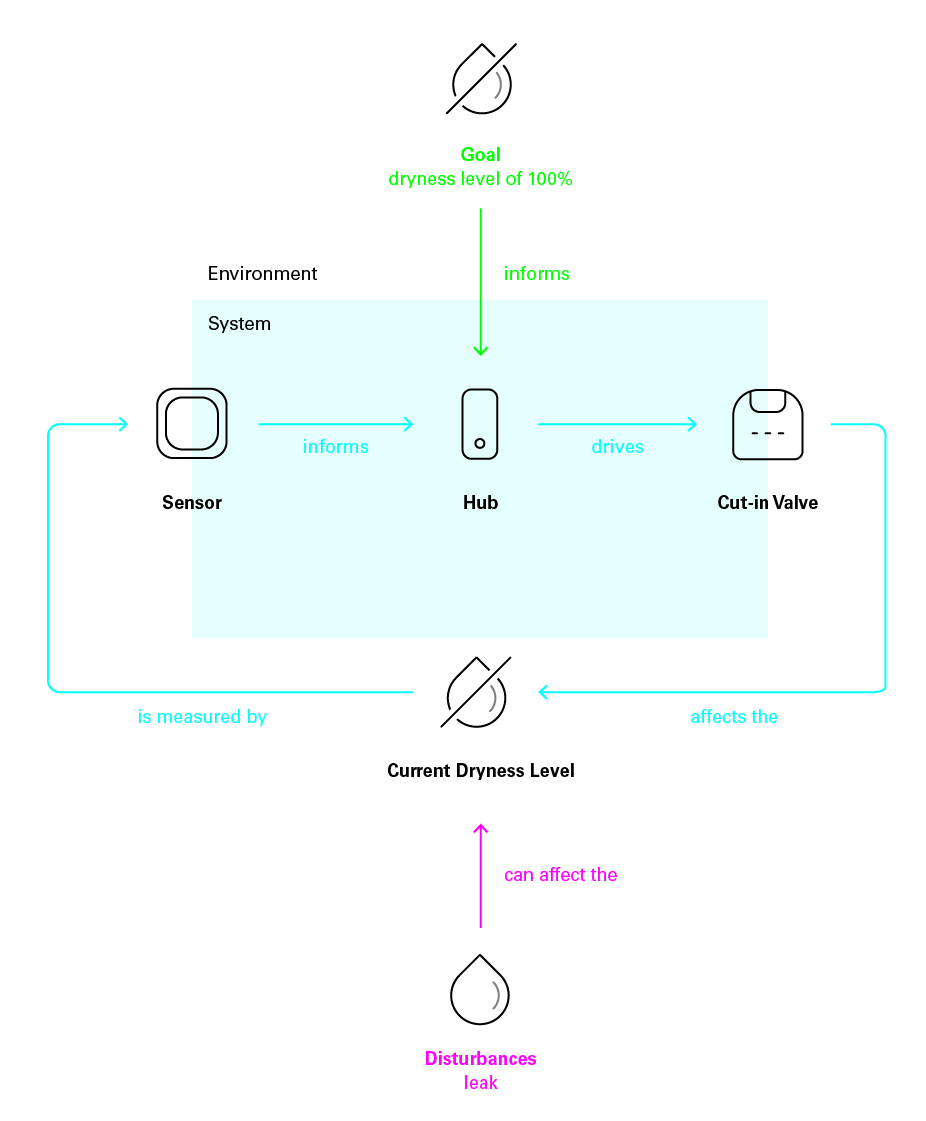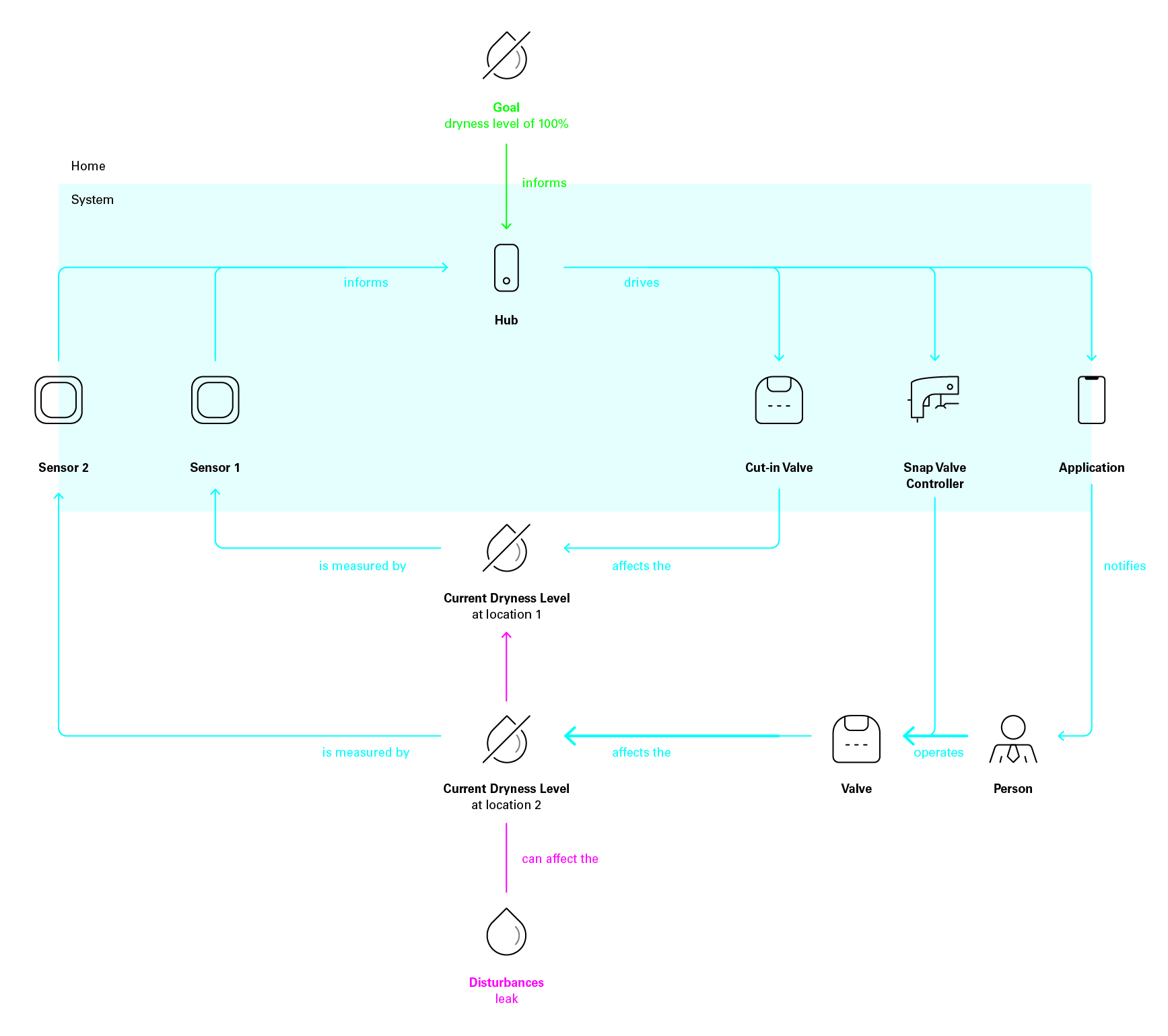
Canonical feedback loop
- Dubberly Design Office
- Document
- 2019
- 11 × 17 in
Canonical models of computer-human interaction are based on an archetypal structure—the feedback loop. Information flows from a system (perhaps a computer or a car) through a person and back through the system again. The person has a goal; she acts to achieve it in an environment (provides input to the system); she measures the effect of her action on the environment (interprets output from the system—feedback) and then compares result with goal. The comparison (yielding difference or congruence) directs her next action, beginning the cycle again. This is a simple self-correcting system.
The first canonical feedback loop exemplifies the process. The second feedback loop shows how the system forms a feedback loop. The third feedback loop shows how multiple sensors and actuators may be used in a closed canonical feedback loop.
Credits
- Design: Marina Menéndez-Pidal
- Creative direction: Hugh Dubberly

